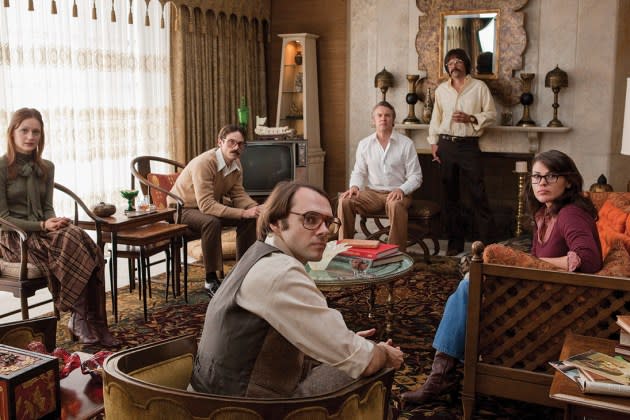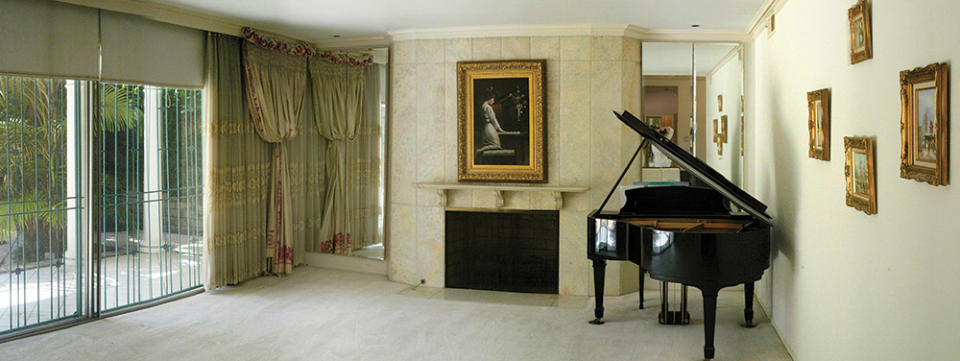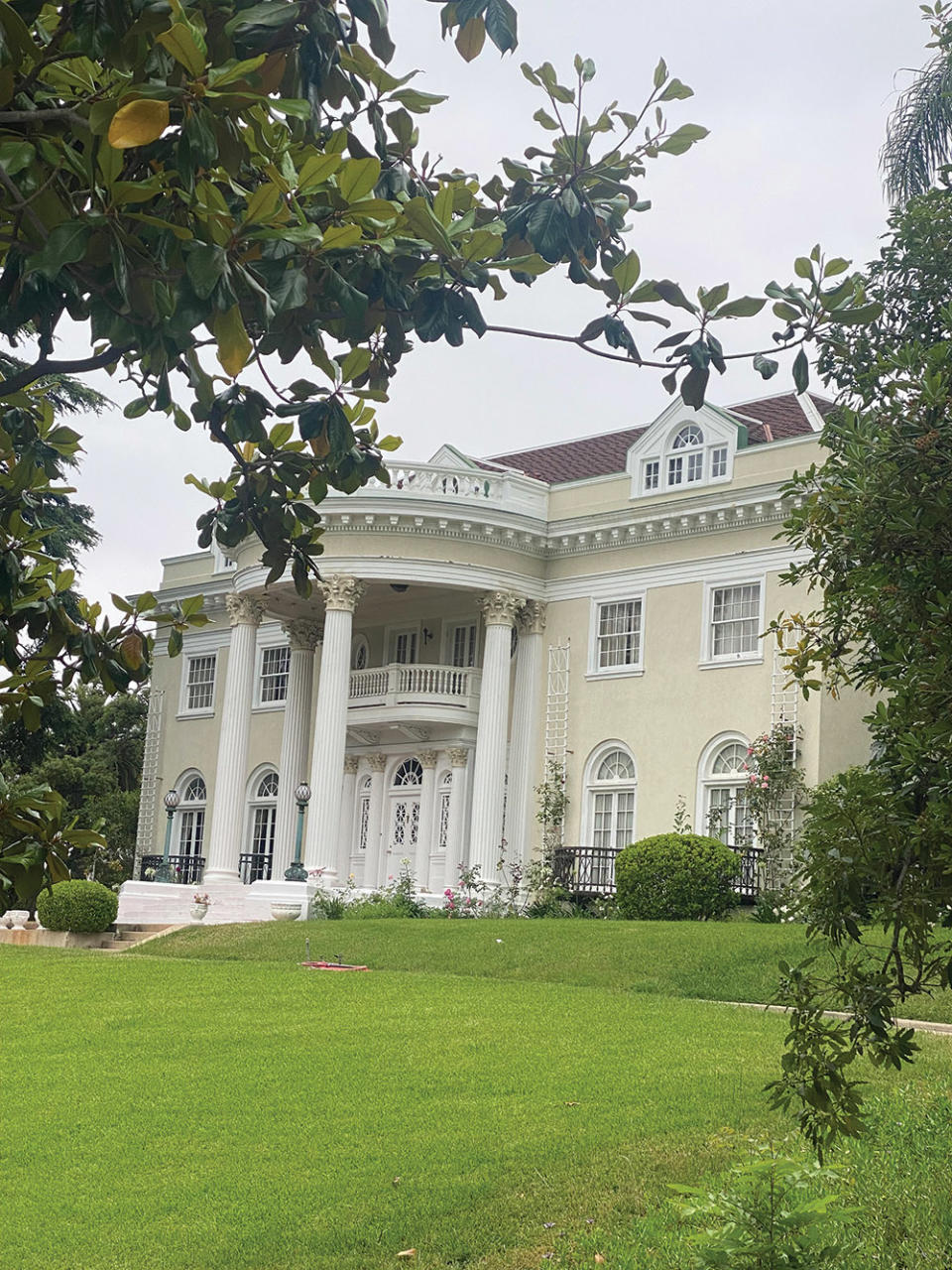Would You Turn Over Your Home to a Hollywood Film Crew for $5,000 a Day?

There was a time when legendary location scout Lori Balton was like a modern-day Philip Marlowe, trolling the neighborhoods of Los Angeles, in search of the perfect private home to shoot. “We used to literally drive around and look at the front of the house and we were kind of anthropologists in a way,” she says. “You look at the outside of the house, and you look for clues, like what kind of car did they drive? Do they have kids? And then you’d leave a letter and then you’d go and look at the house.”
While working on Rob Reiner’s Ghosts of Mississippi (1996), Balton detected the perfect SoCal home to stand in for the Old South. “In Sierra Madre, I passed this house and I just stepped on the brakes, backed up, and I was like, ‘Oh my God, that’s it,’ ” she recalls. “It was this old farmhouse that was still there, and I shot it. And when I came back, everyone was so amazed. We shot the whole thing there, exterior and interior.”
More from The Hollywood Reporter
Oscar De La Hoya on His New Life in Las Vegas: "I Should Have Done This a Long Time Ago"
Kendrick Lamar Drops $40 Million on a 9-Bedroom Estate in L.A. (Report)
London Real Estate Is About to Get the 'Selling Sunset' Treatment
The home fooled even natives of the state. “Even people from Mississippi were calling to ask, ‘Where in Mississippi is that house?’ ” she says with a laugh.
Nowadays, privacy hedges and fences have made searching for locations in the L.A. area a lot harder. Luckily, the internet has stepped in to fill the void, in both positive and negative ways. “Producers use it and think they can do our job. They’ll send me links to 27 houses and all of them are wrong,” says Balton. “But because it’s coming from the producer, I have to follow up on all of them. So, it’s a big time suck.”
But it can also be a godsend. “When I was working on Quentin Tarantino’s Once Upon a Time in Hollywood, it was a very specific geography with how the driveway related to the pool and how that shot was going to run,” Balton says. “I used Google Earth for almost all my scouting to find a driveway with a pool.”
As for her favorite interiors, open floor plans, which can be shot to look like separate rooms, are a perennial favorite. “I like a bigger house that we can make feel small, because if it’s a house that’s too small, you can never make it feel big,” she says. “And we’ve got an awful lot of equipment that has to fit inside.”
The next step is to convince homeowners to rent out their house — a tricky proposition given perennial worries about loud crews, broken furniture and scraped walls. Even Balton admits she was wary when she was approached by a location manager about filming in her own house. “I thought, ‘She’s never going to shoot here, so sure, take a look,’ ” Balton says. “They ended up wanting to shoot there, and my first reaction — to myself — was, ‘Fuck no. I don’t want people in my house.’ Then I said, ‘Come on, you talk people into this every day, you have to.’ And it was a great experience.”
Actress and acting coach Holly Gagnier had no such qualms when it became clear that her storybook 1926 Tudor in Toluca Lake was ideal for filming. And she wasn’t concerned about potential for damage. “I’ve worked so much that I know what sticklers they were for us not touching certain things, not using the bathrooms. I’ve really seen it firsthand, unless it’s just some crappy crew,” she says. “The location was often treated better than the actors, probably because they were paying so much more for it.”
Today, those payments average a minimum of $5,000 to $6,000 per day on shoot days. As an added bonus, prep days are paid and if production rents your home for under fourteen days, the income is tax free. “We try to give you roughly around what your mortgage payment would be a day,” Balton says. “And if it’s something that’s an extraordinary, unique house in some way that they really like, then you can get more money for it.”

Indeed, Douglas Elliman real estate agent Juliette Hohnen used her negotiation skills when a film crew wanted to rent out the large garden of her Bel-Air home while they shot on her street. She turned down the first offer. “Being the real estate agent that I am, I said, ‘We will do it for double that.’ [And] why wouldn’t I do it? It’s free money. It was a major windfall. I bought new windows, which I’ve been meaning to do for 20 years!”
That sort of potential windfall has led many homeowners to sign up with location agents like Home Shoot Home, CAST Locations, Universal Locations and On Location Inc., or online listing services like Gigster, Scouty and Set Scouter.
When actor Brian Lally signed up his classic Cape Cod with Toni Maier & Team of On Location, Inc., he often found himself waiting to see if his home had been picked. “It’s funny because we’re actors,” he says. “But it was our house that would be up for the job.”
For longer shoots, productions will often put homeowners up in hotels. For shorter shoots, there is the lure of stargazing, excitement — and unlimited snacks. “My daughter Grace and I knew when to go in and out when they’d say cut, and we’d go out the back door,” Gagnier says. “It was really fun because they give you craft services. They let you in on all the meals. Grace loved it. There’s a table there with candy all day long. She’s like, ‘Oh my god, I can eat whatever I want! Ice cream, cookies.'”
Seeing the strange things production does to dress your home can also be bewildering. For one commercial, Gagnier’s house needed to look dreary and sad. “I had a huge tree in my front yard. It was the beginning of spring, so it was just getting its leaves. They snipped all the leaves off of it,” she says. “They paid the gardener three grand to snip the leaves off the entire tree.”
For Hollywood professionals renting your home can also lead to unexpected surprises. “I got a cold knock from the Jay Leno show. I ended up being in the sketch,” says Gagnier. “It was about fixing my washer and dryer. And then when they met me, they’re like, ‘Are you an actress?’ I’m like, ‘Yeah.’ They’re like, ‘Do you want to be in the … sketch? We fix something in your house.’ And I said, ‘Sure.’”
Of course, disruptions pertaining to a shoot can and often do annoy neighbors, but they can be placated. “Location managers rent people’s driveways to prevent things like that,” says Balton. “We try to spread the wealth around. We’ll send fruit baskets or gift cards to people, especially if we’re going to be there for multiple days. The most important thing I find is that you communicate early and often.”
Hohnen notes that whenever a neighbor had a problem with production, they quickly took care of it. “I just shared the location manager’s number with everybody and anytime they had a concern, they would call him. He would answer it immediately and deal with it immediately,” she says. “So, they couldn’t really complain.”
Despite all the pluses, light fixtures and sprinklers run the risk of being broken (they will be replaced) and it can be shocking to see your home repainted a color you hate — though the production will always paint it back. Occasionally, a shady clause will end up costing a homeowner money. For example, Lally was shocked when production once brought in an above-ground pool and filled the water with his hose — resulting in a massive water bill.

Gagnier says she has learned to treat her home like an Airbnb when a production is there, no matter how much she trusts them. “I still had all of my really nice stuff locked away in a closet. Look, we just live in a world where you can’t be in every room at all times,” she says. “If you have a Ming vase or something, get it out of there.”
But the annoyance is minimal, and often production is gone as quickly as it came. Lally, whose classic Cape Cod home has been used in music videos, Disney shows, and commercials for Southern Bell, Bud Light, Toyota and Geico, recalls the magic of watching crews clear in and out like a carnival on a one-day gig.
“They would get there at 6 a.m. and I’d look out the second-floor window and they would start to bring equipment. And then within an hour or so, there was a whole company of people down there,” he says. “There’s just 40 people running around doing their job in your yard, and it’s packed with trucks and equipment and everything. And then you look out the window at 10 p.m. and they’re gone. They don’t leave a thing behind.”
No wonder some people are even building homes specifically to be shoot-friendly. According to Hohnen, one client, a photographer, turned their Tarzana house into a Grecian wonderland and reaped the benefits when they sold it 10 years later. “We sold it for a very good price, a great profit, because it was basically a shoot house, and it was on a big enough lot that it didn’t annoy other people.”
A version of this story first appeared in the June 5 issue of The Hollywood Reporter magazine. Click here to subscribe.
Best of The Hollywood Reporter

 Yahoo News
Yahoo News 
